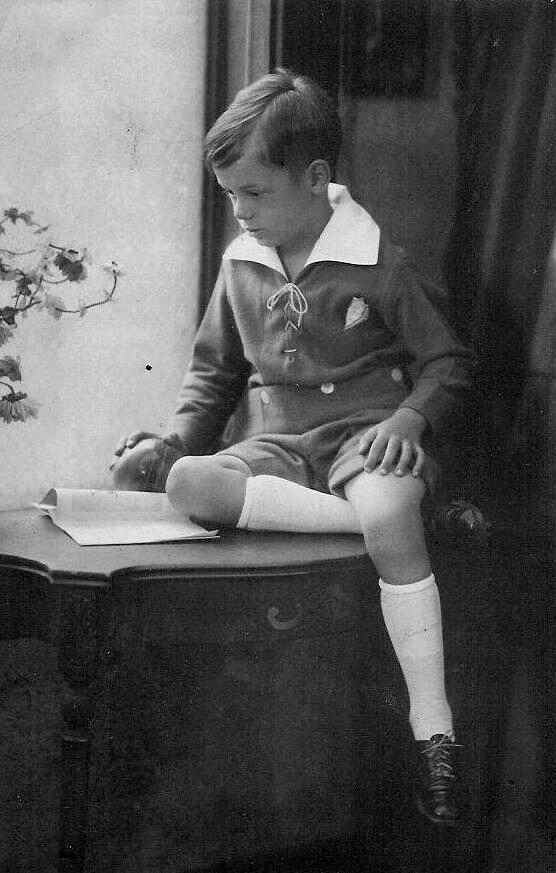
Figure 1.--Button-on styling was a popular approach to pants suspension for younger boys during the first half of the 20th century. This portrait ia undated, but was probably taken in the early 1930s. |

|
We are still developing information about German trouser suspension trends in the 20th century. The photographic record provides a great deal of information, but leaves many aspects of this topic unanssweed. We had thought that suspenders were more common than belts in the early 20th centyry, but a German reader disagrees. Actually for younger boys, neither seems very common. Many younger boys wore blouses. And because the blouse covers the waist and suspenders were not worn with blouses, the type of trouser suspension is not readily apparent. We think that many younger boys had underwaists or make-shift arrangements involving pins. We do notice that belts are much more common after World War I, especially by the 1930s. We also note button-on styling for younger boys in the early 20th century. Lederhosen with haltars were worn in the 19th century. Kneepants were were rapidly repalaced with short pants and kneesocks in the 1910s. We do not notice suspender pants and H-bar pants until after World War I. These styles were widely worn by younger boys. Short pants were the most common. The suspender shorts appears to have been particularly popular in Germany. Perhaps the similarity with lederhosen halters were a factor here. Belts do not appear to have been very common until after World war I. Here the Hitler Youth in the 1930s may have been a factor in popularing the belt,
We are still developing information about German trouser suspension trends in the 20th century. We had thought that suspenders were more common than belts in the early 20th century, but a German reader disagrees. Actually for younger boys, neither seems very common. Many younger boys wore blouses and suspenders were not worn with blouses. We think that many younger boys had underwaists or make-shift arrangements involving pins. This of course can not be determined in most photographs, because waists were considered under garments. We also notice button-on styling. A German collector of old photographs writes, "I just browsed through my boy photos, especially the individual portraits taken in the 1900s/1910s. Many boys wear blouses covering their waists so the method of trouser suspension is not readily apparent. I do note some belts but no suspenders, at least in the individual portraits. I did note suspenders advertised in a catalog."
We continue to note boys weating blouses, probably with underwaists in the 1910s. Kneepants were were rapidly repalaced with short pants and kneesocks in the 1910s. We are not entirely sure about suspension trends.
There were a wide range of suspension approaches. We continue to notice button-on styling in the 1920s. We also notice boys wearing susender shorts. This was not a style we see very commonly before the War. We do not notice suspender pants and H-bar pants until after World War I. These styles were widely worn by younger boys. Short pants were the most common. The suspender shorts appears to have been particularly popular in Germany. Perhaps the similarity with lederhosen halters were a factor here. We do notice that belts are much more common after World War I. It is not always clear what boys wearing suits were waeing to hold up their trousers. Available images suggest more boys were wearing belts, even sith suits. We believe, however, that suspenders were still quite common.
Belts seem especially common for German boys by the 1930s. Lederhosen with halters were worn in the 19th century, but not so commonly by boys. We see many boys wearing them in the 1930s. Belts do not appear to have been very common until after World War I. We see both belys and suspebnders in the 1920s, but suspenders seem to hve been more common. This seems to have shifted in the 1930s. Again we see both belts and suspenders in the 930s, but now belts seem more common--especially by the late 1930s. Here the Hitler Youth may have been a factor in popularing the belt during the 1930s. Hitler seized power (1933) and he quickly turned the Hitler Youtrh (HJ) into a mass movement. Virtually all German boys soon had to join the HJ at age 10. And the belt buckle was an important part of the uniform. Suspenders could not be worn with the HJ Youth uniform and most boys wanted the special belt buckle. We believe that boys who wore belts as part of theor HJ uniform would have wanted to wear belts with other outfits as well. We note many yoinger boys wearing H-bar shorts and to a lesser extent suspender shorts. Many younger boys had H-bar suspension shorts tht were not Lederhosen. We note some button-on styling, but not as many as in the 1920s. The belt by the end of the decadec seems to have emerged as the main trouser suspension device.
We see many boys wearing suspender shorts in the 1940s. Some were done as H-bar shorts, looking rather like shape og Lederhosen halters. Belts became increasingly common and we see fewer boys wearing suspenders.
Navigate the Boys' Historical Clothing German pages:
[Return to the Main German trouser suspension chronology page]
[Return to the Main German trouser suspension page]
[German choirs]
[German youth groups]
[Hitler Youth]
[German school uniforms]
[German royalty]
[German sailor suits]
[Lederhosen]
[Ethnic]
[Tights]
[Long stockings]
Navigate the Boys' Historical Clothing Web Site:
[Introduction]
[Activities]
[Biographies]
[Chronology]
[Clothing styles]
[Countries]
[Girls]
[Bibliographies]
[Contributions]
[Essays]
[FAQs]
[Glossaries]
[Images]
[Links]
[Registration]
[Tools]
[Boys' Clothing Home]
